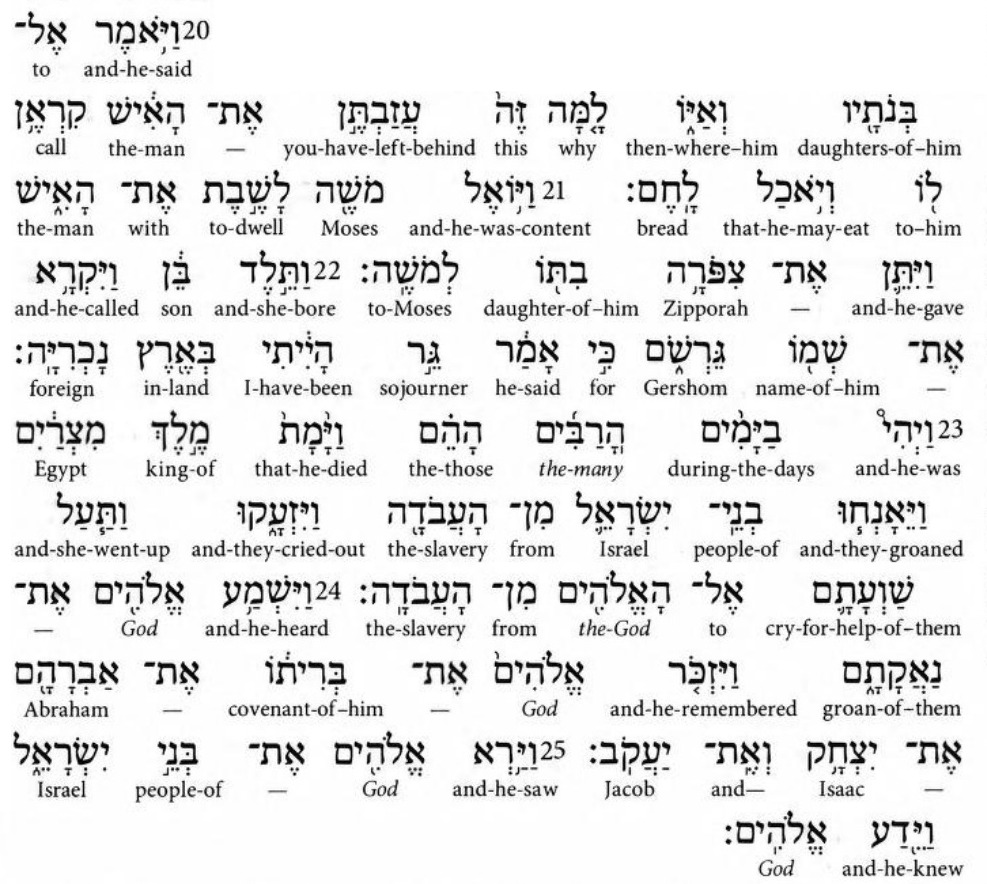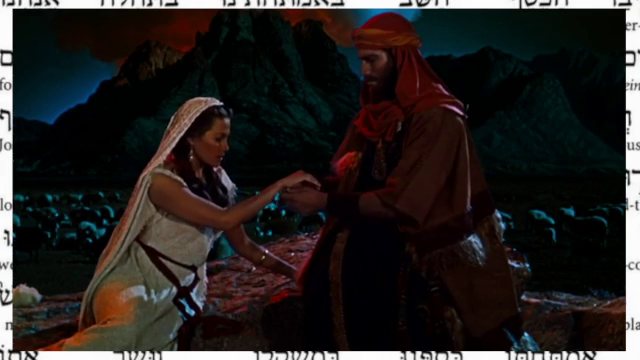
The language of ivrit ( עברית ) Exodus 2, Post #4
Welcome to my Hebrew reading & language series.
Exodus 2:20-25
Last week we saw Moshe (Moses) fleeing for his life because Pharaoh heard about him killing a man, then we went to Midian where he saved some ladies from bully shepherds. This week Reuel, the father of those same ladies, is asking his daughters why they had not invited him home so he could get something to eat.
Moshe was content living in Midian and he took Zipporah as his wife and they had one son. The boy's name, Gershom, means "I have been a sojourner in a foreign land."
Meanwhile, the king of Mitsraim (Egypt) had died and the people's work of Israel got worse. They cried out to God and he heard them. He remembered his covenant with the patriarchs and the text says, "God saw the people of Israel and he knew."
That last part reads the same in Hebrew as it does in English and it seems like it is missing something. What did he know? Could it be that he knew he had to do something about it? Maybe he knew he what the new king had to go? I am not sure what that line means.
Today's reading
English
He said to his daughters, “Then where is he? Why have you left the man? Call him, that he may eat bread.” And Moses was content to dwell with the man, and he gave Moses his daughter Zipporah. She gave birth to a son, and he called his name Gershom, for he said, “I have been a sojourner in a foreign land.”
During those many days the king of Egypt died, and the people of Israel groaned because of their slavery and cried out for help. Their cry for rescue from slavery came up to God. And God heard their groaning, and God remembered his covenant with Abraham, with Isaac, and with Jacob. God saw the people of Israel—and God knew.
With that, we wrap up another completed chapter in Hebrew and we will move on to chapter three next week.
Hebrew

The story continues next as Moshe meets YHVH...
Info on each letter starting at the beginning
If you are just starting, my lessons are all here starting at Alef, adding vowels (the dots and lines) as we go. I explain the meaning of each letter and its numerical value. Just go to my blog and scroll to the bottom or click here
Get your Hebrew Bible now!
Click here to obtain the book we are using. It is a free download or browser usable.
Thanks for reading.











Comments